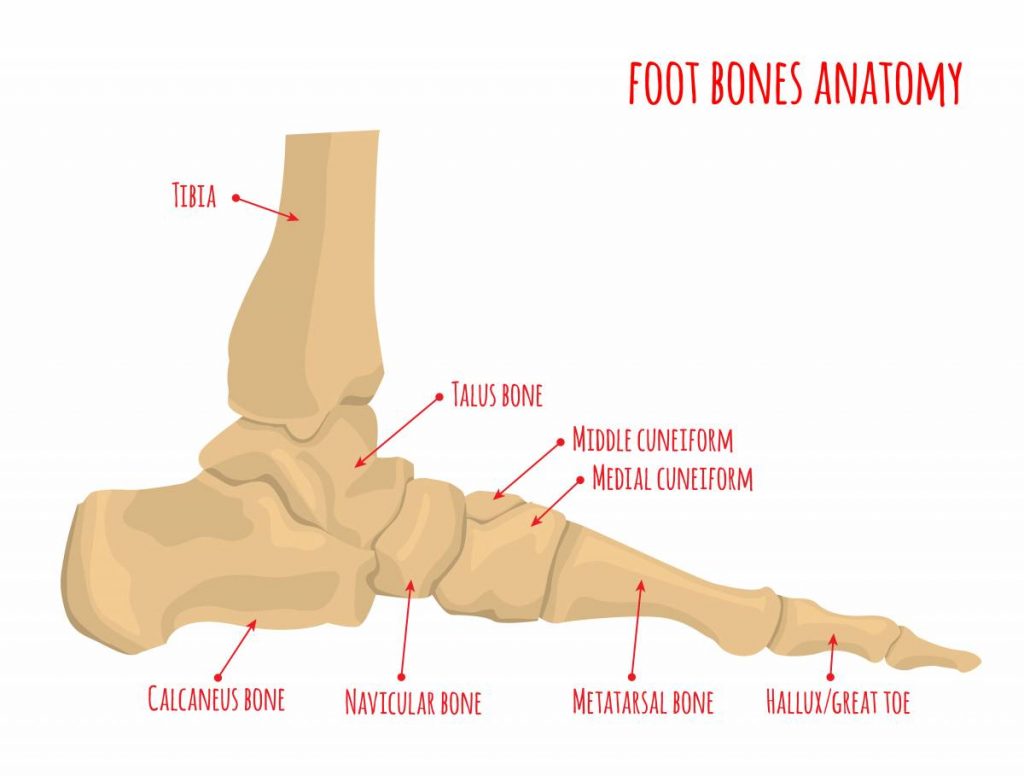
How happy are your feet? Have you noticed a change in the landscape of your toes? If you always thought bunions only affected women of a “certain age” (i.e., your grandmother and great-aunt Hazel), you might be surprised to discover you were wrong. The good news is that this unsightly and often painful foot condition can be managed naturally so you can have more spring in your step.
What is a bunion?
A bunion is a painful bony protrusion or bump that forms on the inside of one or both feet at the joint of the big toe. It is sometimes referred to as hallux valgus, which is when the big toe shifts toward the smaller toes. The enlarged big toe joint is often inflamed and red, which is why the word “bunion” comes from the Greek word for turnip.
The big toe consists of two joints: the metatarsophalangeal joint (MTP), which is where the metatarsal (the first long bone in the foot) meets the phalanx (the first bone in the toe). Bunions form at the MTP joint.

Bunions typically develop during adulthood and form slowly over time. As the normal position of the bones, ligaments, and tendons in the foot changes because of pressure from footwear (typically heels combined with a narrow toe box), the big toe shifts toward the second toe, resulting in a painful bump. As the bunion worsens, it can become more difficult to wear shoes or to walk.
Some people develop bunionettes, which can form at the base of the little toe. Similar to a bunion, it can be painful and have a callus or hard corn over the bump.
Read about treat your feet with aloe vera
Who gets bunions?
Bunions have a genetic aspect, as about 70 percent of people with a bunion have a family history of this foot condition. Women are more likely than men to develop bunions, which may not be surprising since shoes with high heels and/or narrow toe boxes are commonly found in women’s closets and are a cause of this foot problem.
However, bunions can also develop in men and teenagers, especially in young girls between the ages of 10 and 15. Known as adolescent bunions, they are typically painful and can make it challenging to wear shoes, but big toe movement up and down is usually not restricted as it is in adult bunions.
Bunion causes and symptoms
Along with heredity and wearing shoes that force your toes into an unnatural position, some medical conditions can cause or increase the risk of developing bunions. They include rheumatoid arthritis, polio, or a neuromuscular condition such as cerebral palsy, multiple sclerosis, or Charcot-Marie-Tooth disease.
Symptoms of bunions can include tenderness, pain, inflammation, redness, corns, calluses, and restricted big toe motion, which may result in trouble walking.
Treating bunions naturally
The majority of bunions can be managed naturally by adopting a few lifestyle changes. Although nonsurgical methods will not eliminate bunions, they can significantly reduce pain and slow or stop the progression of the condition.
- Treat your feet. The first action you need to take to manage bunions well is to review your shoe collection. Your feet require and deserve shoes that are the correct size and width. If you have shoes that compress your toes, it’s time to give them away or use a stretcher to spread the areas that are putting your toes under pressure.
- Baby, the bunion. Use silicone pads inside your shoe to protect the bunion. You may need to experiment with the pad size you use, as the wrong size can make any pain worse.
- Go ortho(tics). The use of orthotics, either over-the-counter or ones tailored especially for your foot, can reduce pressure on your bunion.
- Space out. You can use toe spacers between your toes to relieve bunion pressure.
- Splint it. Some people get some relief by wearing a splint on their big toe while they sleep. Your doctor can help you make the right choice.
- Try natural anti-inflammatories. Curcumin, green tea extract, bromelain, ginger, and fish oil can help fight inflammation and pain.
- Shop for shoes wisely. When buying shoes:
-
- Measure both feet. Since one foot is typically larger than the other, choose the size of the larger foot.
- Select shoes that have soft soles, lots of stability, wide toe boxes, and adequate insteps.
- Keep the heels low: the higher the heel, the more pressure is placed on your forefoot and the more pressure on your bunion.
- Choose shoes by how they fit, not by the size marked on the shoes. Not all manufacturers size their shoes the same.
- Stand when trying on shoes and make sure there is at least 3/8 to ½ inch of space in the tip of the toe box.
Bottom line
If you have bunions, try these natural ways to manage this foot condition. By changing a few habits and perhaps a few pairs of shoes, you can have happier, healthier feet.




